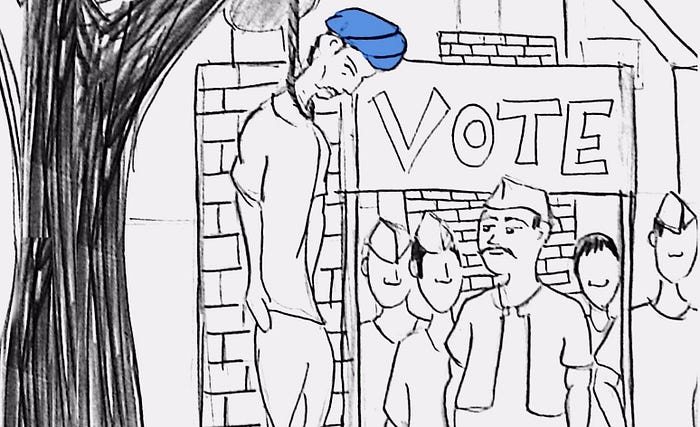Capitalism in agriculture, the last resort

The Agrarian crisis in India never seems to end. The plight of the poor farmers is being exploited as an instrument for vote bank politics, with every political party announcing a farm loan waiver since the V.P. Singh government announced the first farm loan waiver scheme in the year 1990. This policy is not just superficial, it also harms the farmers as there is hardly any funds left for the government to initiate reforms in the agri-sector.
But why do the farmers fall in the debt trap over and over again? Is it that the Agri sector is not profitable? According to a study by the Organisation of Economic Cooperation and Development (OECD), the agriculture sector has not been profitable for the past 20 years. The major reasons behind this are as follows:
- Lack of quality seeds.
- Inadequate and inefficient irrigation channel.
- Government’s inability to implementing Minimum Selling Price (MSP) on certain commodities.
- Lack of risk cover through insurance policies against natural calamities.
- The huge gap in demand and supply of certain goods due to lack of knowledge and understanding of agricultural economics.
- Huge inefficiencies in the supply chain including lack of storage facilities and efficient transport mechanisms.
The list is not exhaustive, but the point is the current system is unorganized, inefficient and unsystematic. Several policies have already been proposed over the years by independent research groups, including the NITI Ayog, to improve the situation, but nothing has changed.
Then, what should the government do when it is unable to deliver? In the year 1991, India was at the brink of national emergency owing to a severe economic crisis. But the then Congress government led by Dr. Manmohan Singh introduced several revolutionary reforms, most importantly, the introduction of capitalism and privatization in the then slogging government sectors. Since then, our economy has taken an upward trend and we are currently the fastest growing economy in the world.
Hence, in my opinion, the most immediate reforms to be taken by the government is to promote the privatization of agriculture through complete contract farming. It is a win-win situation for both parties. Pepsico, has been quite successful in this approach and have experimented with several models and have concluded in their report submitted in the ICSE Conference, that a complete contract model is most beneficial to both the parties. In this model, the farmer supplies land and labor and the firm supplies all the inputs that are required for production including high-quality seeds, fertilizers and most importantly, expert advice and guidance to the farmers to maximize crop production. The selling price of the crop is fixed by a legal contract between the 2 parties. Hence, the farmer focuses on what it does the best, farming! The rest of the supply chain is taken care of by private players. This would eliminate the inefficiencies of the supply chain and the gap in demand and supply and make the industry more systematic and organized and hence profitable.
One would argue that Reliance and ITC have already tried and failed, then why promote it now? The reason for their failure was their inability to lift crops timely and lower risk appetite. To solve this problem, the government needs to play a crucial role in minimizing risk by providing crop insurance to both farmers and private players, to incentivize both the parties. One major drawback can be the private players cheating the farmers by falsely claiming damaged or lower quality of crops. Such practices can be curbed by ensuring that it would be the firm’s responsibility to ensure good quality of crops.
In the long run, the government can use the funds saved from farm loan waivers to improve the infrastructure of storage facilities via public-private partnerships. With the advancement in technologies, fuelled by the infusion of the private sector, a national decentralized index can be introduced to predict prices beforehand and regulate crop production accordingly to maximize profit. Such schemes could not be introduced earlier due to the not so tech-savvy population. Privatization would also attract the educated lot into this sector, further fuelling innovation.
Hence, privatization, in my opinion, is the fastest way to lift India out of the agrarian crisis.
References: